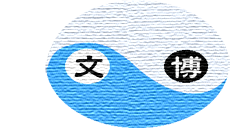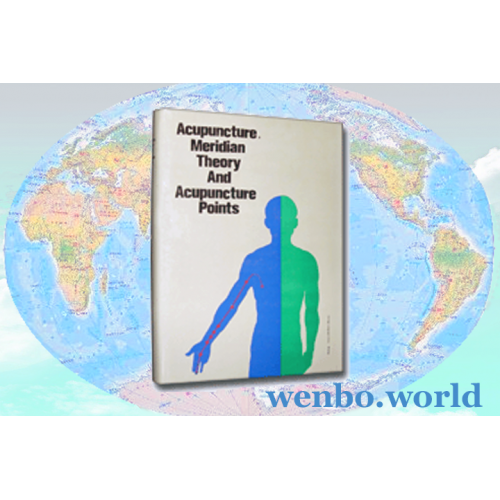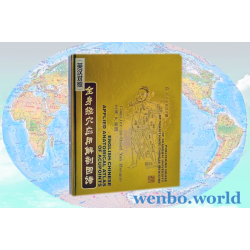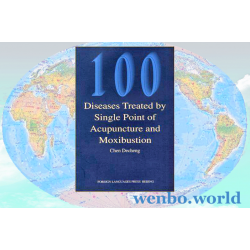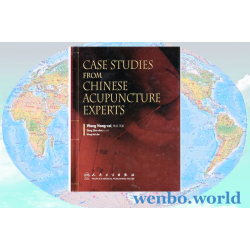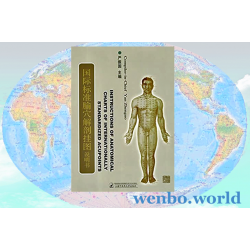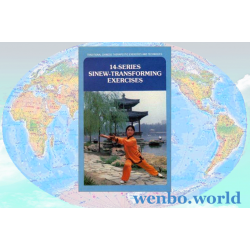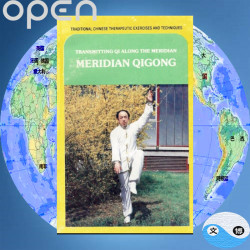Acupuncture, Meridian Theory and Acupuncture Points
- Brand: Publishers of China
- Product Code: 1991hc
- Reward Points: 300
- Availability: 1
$59.99
- Price in reward points: 5999
by Li Ding. The essential functions of the meridian system are to "transport qi and blood," "to maintain conductivity" and "to resist invasion of exogenous pathogenic factors." The meridian system distributes to all parts of the body.
Title: Acupuncture, Meridian Theory and Acupoints
Written by Professor Li Ding, Shanxi Medical College
Translated by You Benlin and Wang Zhaorong
Foreign Languages Press
Hardcover, 413 pages
ISBN 7119004050
The meridian theory is the study of the physiological function and pathological change on the meridians, the their related zangfu organs. The essential functions of the meridian system are to "transport qi and blood," "to maintain conductivity" and "to resist invasion of exogenous pathogenic factors." The meridian system distributes to all parts of the body. The endless circulation of qi and blood in the meridians is responsible for the maintenance of life and the variety of functions which support it. The meridian theory has been the guiding principle for the clinical practice in the realms of TCM, particularly in those of acupuncture, massage and qigong. By combining the meridian theory with the theories of the zangfu organs and the etiology of TCM, one can thoroughly explain both the physiological activities and pathological change which take place in the body. In this manner, a theoretical basis for the principle of treatment in accordance with the differentiation of symptoms and sighs was established.
"This is the definitive book on the subject of acupuncture and will also be of use for those who practice acupressure and pressure points in martial arts. The book is invaluable- it provides the means of finding points in a simple and understandable way without a lot of professional jargon."
- John L. Herr from USA
"One of the best books I've ever read about acupuncture. Li Ding is a real Master."
- A reader from Buenos Aires, Argentina
About the author: Professor Li Ding is the member of the Board of Directors of All-China Society of Acupuncture and Moxibustion, vice-director and vice-secretary general of Shanxi Society of Acupuncture and Moxibustion, executive member of the Board of Directors of Taiyuan Society of Acupuncture and Moxibustion, and President of Qigong Society of Shanxi Medical College, chief physician of the First Teaching Hospital of TCM.
Over the last twenty-seven years, he has published more than ten books concerning acupuncture and moxibustion, and traditional Chinese medicine and Chinese pharmacology, such as Jianmei Jingluo Tu, A Collection of TCM Clinical Experience, etc. Among the books, The Dictionary of Acupuncture and Moxibustion and Meridian Points, which has been called "epoch-making illustrative dictionary for the points of acupuncture and moxibustion and meridians" and "the first creation in history," is chiefly edited by Dr. Li Ding and published by Dongyang Academic Publishing House, Tokyo, Japan.
According to many years teaching and clinical experience, Dr. Li Ding has combined the meridian theory with Qigong's characteristic of regulation respiration and transmitting the qi to create Meridian Qigong in July 1985. Meridian Qigong has been called "the latest Qigong for transmitting Qi along the meridians." In April 1986, he ran an international short-term training class of Meridian Qigong and ten doctors coming from U.K., West Germany, U.S.A., Norway, India, Singapore and Belgium attended the class. This Qigong is also welcomed at home. On the basis of Taiji Qigong eighteen types, he has had his own Taiji Qigong twenty-eight types, and his Taiji Qigong was also welcomed when he taught in Italy and Singapore. He has been invited to give lectures in Japan, Italy, Singapore, America, West Germany and Canada.
Main Contents
- The Theory of the Meridians: The Concept of the Meridian Theory, The Origin and formation of the Meridian Theory
- The Meridian System: The Concept of the Meridians, Formation of the Meridians
- The Physiological Functions and Pathological Changes of the Meridians: The Physiological Functions, The Pathological Changes
- The Clinical Application of the Meridians: The Diagnostic Aspect, The Therapeutic Aspect
- The Twelve Regular Meridians: The Nomenclature of the Twelve Regular Meridians, The Courses and Distributions of the Twelve Regular Meridians, Summary on th Distributing Rules of the Twelve Regular Meridians
- The Eight Extra Meridians: A Brief Comparison Between the Extra and Regular Meridians, The Eight Extra Meridians, The Three Major Functions of the Eight Extra Meridians
- The Fifteen Major Collaterals of the Meridians, The Inner Conduits of the Twelve Regular Meridians, The Tendinomuscular Structures of the Twelve Regular Meridians, The Cutaneous Zones of the Twelve Regular Meridians
- The Concept of Acupuncture Points and Regular Points
- The Nomenclature of Regular Points: Nomenclature Based on TCM Anatomy and Its General Theories, Nomenclature Based on the View of "Harmony Between Men and Nature"
- Methods for Locating Points: Proportional Measurement, According to Anatomical Landmarks, Finger Measurement, Simple Measurement
- The Concept and Significance of Specific Points: The Five Shu Points, The Twelve Yuan (Source) Points, The Fifteen Luo (Connecting) Points, The Back-shu and Front-mu Points, The Eight Influential Points, The Eight Confluent Points, The Sixteen Xi (Cleft) Points, The Lower He-sea Points, Coalescent Points
- The Functions of Regular Points - Physiologically: Infusion of Qi and Blood, Pathologically: Manifestation of Disease, Therapeutically: the Treatment and Prevention of Diseases
- Generality and Particularity of Indications
- The Three Yin Meridians of the Hand
- The Three Yang Meridians of the Hand
- The Three Yang Meridians of the Foot
- The Three Yin Meridians of the Foot
- Du and Ren Meridians
- Extra Points
- New Points
Tags: acupuncture, meridian theory
Related Products
Applied Anatomical Atlas of Acupoints
Depicts acupoints on the human body in various postures, acupoints along the fourteen meridians or r..
100 Diseases Treated by Single Point of Acupuncture and Moxibustion
by Chen Decheng. Single point therapy is an independent treatment method. It refers to the applicati..
Case Studies from Chinese Acupuncture Experts
This book is a collection of case studies from experienced Chinese clinical practitioners that illum..
Anatomical Charts of Internationally Standardized Acupoints
by Yan Zhenguo. There are totally six color-printed big charts (posters) in "Anatomical Charts of In..
14-Series Sinew-Transforming Exercises
by Chang Weizhen. The Sinew-Transforming Exercises are a traditional form of such Qigong exercises f..
Meridian Qigong: Transmitting Qi Along the Meridian
The author has devised and demonstrated a new type of Qigong that combines mobile and quiescent exer..
